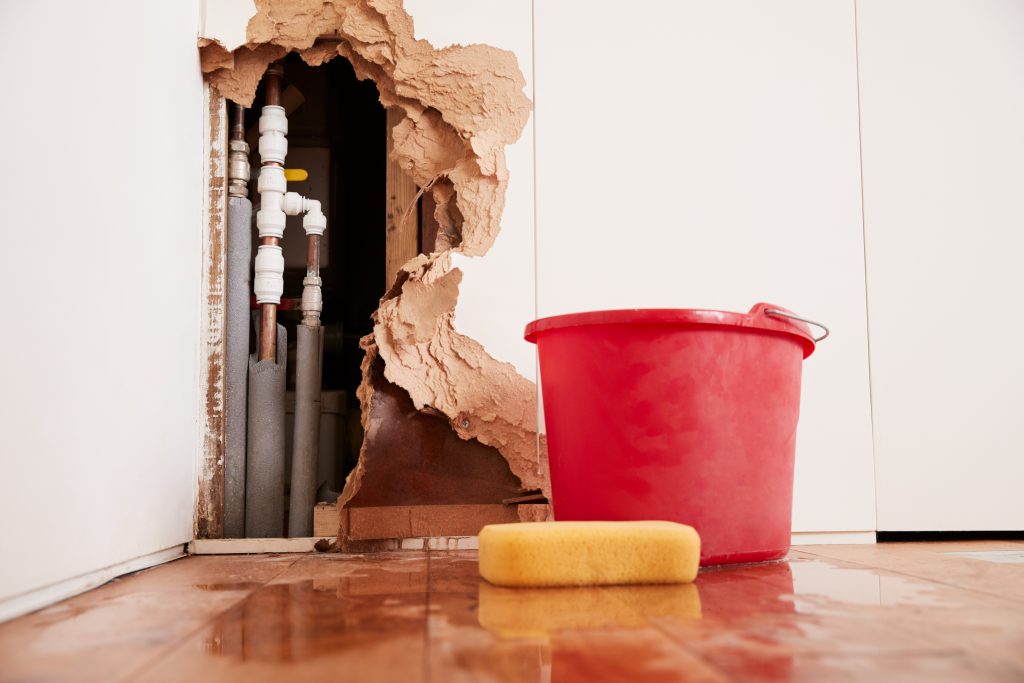The writer is making a few great annotation on the subject of Leaking water lines as a whole in this content followed below.

Early detection of leaking water lines can reduce a possible disaster. Some little water leaks might not be visible.
1. Analyze the Water Meter
Inspecting it is a guaranteed way that aids you discover leaks. If it moves, that indicates a fast-moving leak. This implies you may have a sluggish leakage that can also be underground.
2. Inspect Water Consumption
Evaluate your water expenses and track your water intake. As the one paying it, you need to observe if there are any type of inconsistencies. If you find sudden changes, despite your consumption coinciding, it means that you have leaks in your plumbing system. Keep in mind, your water costs need to fall under the same variety monthly. A sudden spike in your expense indicates a fast-moving leakage.
A steady increase every month, also with the same behaviors, reveals you have a sluggish leakage that's additionally gradually rising. Call a plumber to thoroughly examine your residential or commercial property, specifically if you feel a warm location on your floor with piping below.
3. Do a Food Coloring Examination
When it comes to water consumption, 30% comes from bathrooms. If the shade in some way infiltrates your dish during that time without flushing, there's a leakage between the storage tank and dish.
4. Asses Exterior Lines
Do not forget to examine your outdoor water lines as well. Test faucets by connecting a yard hose pipe. Should water leak out of the link, you have a loose rubber gasket. Change this and also make sure all connections are limited. It will aid get it properly checked out as well as kept each year if you have actually obtained a sprinkler system. One little leak can throw away tons of water and surge your water bill.
5. Examine the situation and inspect
Home owners must make it a practice to examine under the sink counters and also inside cabinets for any bad odor or mold and mildew development. These 2 warnings suggest a leakage so prompt interest is called for. Doing regular assessments, also bi-annually, can save you from a significant trouble.
Much more notably, if you understand your residence is already old, maintain a watchful eye on your heating systems, hose pipes, pipelines and so on. Look for discolorations as well as damaging as the majority of home appliances as well as pipes have a life expectancy. They will additionally naturally deteriorate as a result of deterioration. If you believe dripping water lines in your plumbing system, do not await it to rise. Call a professional plumber as soon as possible so you do not wind up with a horrible mess in your house.
Early detection of leaking water lines can reduce a potential disaster. Some little water leaks may not be visible. Examining it is a guaranteed way that helps you discover leakages. One small leak can squander heaps of water and increase your water expense.
If you believe leaking water lines in your plumbing system, do not wait for it to escalate.
WARNING SIGNS OF WATER LEAKAGE BEHIND THE WALL
PERSISTENT MUSTY ODORS
As water slowly drips from a leaky pipe inside the wall, flooring and sheetrock stay damp and develop an odor similar to wet cardboard. It generates a musty smell that can help you find hidden leaks.
MOLD IN UNUSUAL AREAS
Mold usually grows in wet areas like kitchens, baths and laundry rooms. If you spot the stuff on walls or baseboards in other rooms of the house, it’s a good indicator of undetected water leaks.
STAINS THAT GROW
When mold thrives around a leaky pipe, it sometimes takes hold on the inside surface of the affected wall. A growing stain on otherwise clean sheetrock is often your sign of a hidden plumbing problem.
PEELING OR BUBBLING WALLPAPER / PAINT
This clue is easy to miss in rooms that don’t get much use. When you see wallpaper separating along seams or paint bubbling or flaking off the wall, blame sheetrock that stays wet because of an undetected leak.
BUCKLED CEILINGS AND STAINED FLOORS
If ceilings or floors in bathrooms, kitchens or laundry areas develop structural problems, don’t rule out constant damp inside the walls. Wet sheetrock can affect adjacent framing, flooring and ceilings.
https://www.servicemasterbyzaba.com/blog/how-to-detect-water-leakage-in-walls/

Do you like reading about Locating water leaks? Give a short review down the page. We'd be interested to find out your ideas about this blog entry. We are looking forward that you come back again in the future. Enjoyed reading our review? Please share it. Help somebody else check it out. Thank you for your time. Visit again soon.